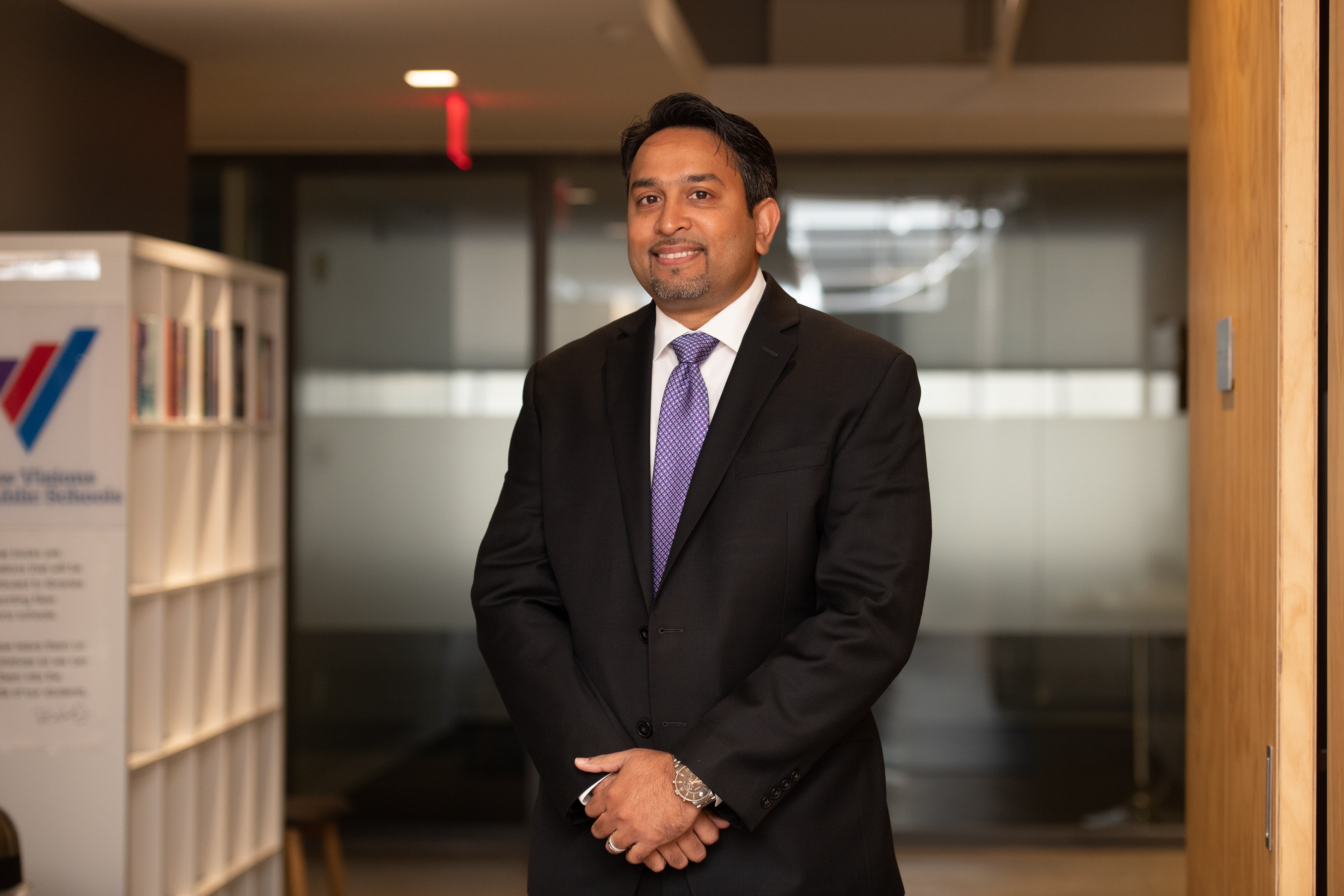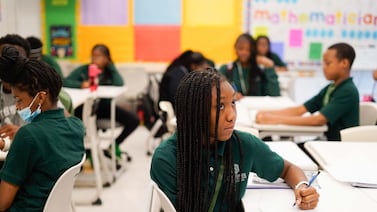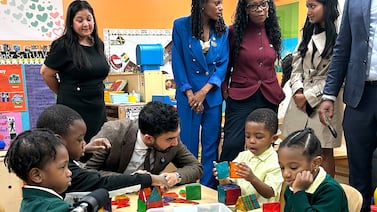Dyanand Sugrim leads Heritage High School in East Harlem, and like many school leaders around the nation, he’s not only welcoming a new ninth grade class to the school building. Many 10th graders will also be brand new to campus — having learned remotely all last year.
When students take their seats in Heritage classrooms in September, many will bring with them the pain and trauma of living amid a pandemic.
“We know that this year will be challenging, but that doesn’t mean schools can’t really be prepared to welcome students with a space proactively geared toward their mental health and wellbeing,” Sugrim said.
At Heritage, that looks like strengthening a partnership with Counseling in Schools — a nonprofit that places counselors in high-needs schools. Sugrim also added a fourth guidance counselor and is trying to make sure students’ mental health needs are addressed during an advisory period.
This year, Heritage will also feature a new mentoring program that pairs incoming ninth graders with seniors. As Sugrim put it: “We want students brand new to the school to feel known on day one.”
Sugrim spoke with Chalkbeat about his school’s unique advisory model and how his years as a teacher impact him as a leader. He will participate in Chalkbeat’s Aug. 24 panel on how schools can better support students’ mental health.
This interview has been lightly edited for length and clarity.
What led you to a career in education?
My father was an educator, and I witnessed the power of relationships between educators and their students that can span generations and turn education into a cornerstone of a community. I didn’t fully understand this until I served as a science teacher in an alternative high school in East Harlem where the majority of students were over-aged and under-credited. This school was their last opportunity to earn a high school diploma. It was a challenge to raise the reading and writing levels, but my students were curious and interested, and that’s all I needed.
Those meaningful relationships helped them pass exams and gain confidence to enroll in — and graduate from — college. And now, 20 years later, those relationships continue to yield fruits; some of those former students are now parents of children at Heritage.
Has there been anything in your career up to this point that prepared you for this school year?
There is no doubt this school year will be challenging, but I believe in the lessons learned during my years as a teacher, assistant principal, and now principal. At the foundational level, instruction must remain at the core of our work, and we should keep in mind that there is much to be gained from a year and a half of remote learning that we will carry over to the traditional classroom. Secondly, mental health for both students and staff must be at the forefront of our work. This is much more than students having access to mental health clinicians. There must be a structure to support long-term programs that can evolve with the changing times. This also includes prioritizing programming for mental health in advisory classes for all students. It is as important as programming for graduation requirements. Third, teachers must be empowered through teacher teams and professional learning communities. For example, advisory teachers should meet a few times per week to develop advisory lessons with the guidance of mental health clinicians.
How are you helping to guide your staff through this unprecedented time?
We have done much work over the past five years developing our advisory programming to support students. We will need to use that structure of student support and our relationship with Counseling In Schools to do the same for staff. That organization has developed programming to support our staff during both structured professional development sessions and individual and small group staff sessions. We must support the folks who support our students.
After an extended period of upheaval, there’s been a lot of talk about the importance of social-emotional learning. Are you doing anything differently to account for what so many families have been through?
Our advisory program has evolved immensely since we started it five years ago. Advisory periods can be just a filler class for teachers and students. We move advisory up — it’s as important as our graduation programming. We’re not just using advisory to catch up on homework or plan out a student’s coursework. Working with Counseling in Schools, we’ve added mental health clinicians to every single advisory class. That level of support and expertise is a crucial part of how we view advisory.
We have seven core pieces of our advisory program:
1. All students in every grade have an advisory period at least one day a week with a teacher, guidance counselor, and mental health clinician from Counseling in Schools. Students are then identified during advisory sessions for individual, small group, or large group counseling with a mental health clinician.
2. As concerns are raised in advisory — about academics or mental health, for example — they are addressed later by the staff members in the room. Every advisory class is facilitated by a content teacher, a guidance counselor, and a Counseling in Schools mental health clinician.
3. The advisory curriculum is homegrown, developed by Heritage teachers, Counseling in Schools, and our students. Each grade level has a specific grade goal.
4. All advisory classes are rooted in restorative justice practices, delivered in a “circle format” with trained student peer mediators. The student in charge that day will have brought something special to them, like a teddy bear or stress ball, that will act as the “talking piece.” They will then go around the circle and share what’s on their minds, using the talking piece to make sure all students are heard and understood.
5. Students have leadership opportunities to meet with their advisory teacher team to plan lessons and deliver those lessons during the spring semester.
6. We also have a “continuous improvement plan” in partnership with New Visions, which works with high-needs public schools and runs its own charter network — to ensure our students can enroll in and graduate from college in four years.
7. The advisory work does not live in a silo. Rather, it is thoughtfully and structurally connected to our work with our Counseling in Schools and New Visions partners.
All of your incoming ninth graders and many of your 10th graders may never have set foot in your building. What does that mean for your school’s culture? How do you plan to address that?
As a starting point, we will develop surveys to gauge student and parent concerns. We will also create programming, including social events and advisory lessons, that will help address many of our students' and parents’ concerns. We have increased our guidance department to address learning concerns, specifically addressing the shift from online remote learning. We also added a fourth guidance counselor.
What’s one thing you’ve read that has made you a better educator?
“Cultivating Genius” by Gholdy Muhammad has been impactful in several ways: a). Developing relationships with students is essential to developing a student-centered classroom. This is the practice that I observed from my father and experienced as a teacher. Recognizing our students’ genius opens doors for many great things to happen. b). Dr. Muhammad’s work also helps schools and leaders to facilitate the difficult conversations around race and equity. It is a great starting point for teachers to incorporate student voices and experiences into their daily lessons.







